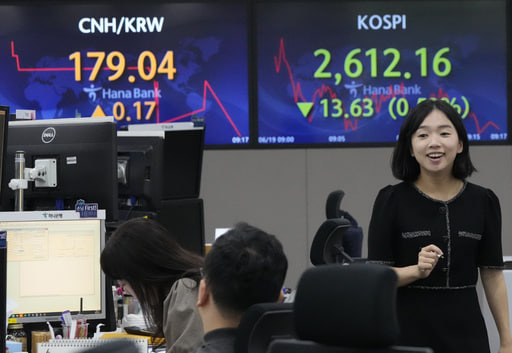Gold ETF Investing: A Deep Dive into SPDR Gold Trust (GLD) and Beyond
Meta Description: Unlock the secrets of gold ETF investing! This comprehensive guide explores SPDR Gold Trust (GLD), its holdings, market impact, risk factors, and strategic implications for savvy investors. Learn about alternative gold ETFs, diversification strategies, and how to navigate the gold market effectively.
Imagine this: you’re sitting in your favorite chair, sipping your morning coffee, and glancing at your investment portfolio. A sense of unease settles in – global markets are volatile, inflation is creeping up, and you're looking for a safe haven asset to weather the storm. Gold, the timeless symbol of wealth and stability, immediately springs to mind. But how do you tap into this ancient market without the hassle of physically storing gold bars? Enter Gold Exchange-Traded Funds (ETFs), and specifically, the behemoth that is SPDR Gold Trust (GLD). This isn't just another investment vehicle; it's a cornerstone of the modern gold market, influencing prices and offering investors unprecedented access to the precious metal. This in-depth guide will dissect GLD, explore its intricacies, compare it to its competitors, and equip you with the knowledge to make informed decisions about your gold investments. We'll go beyond the surface-level statistics, exploring the real-world implications of GLD holdings, the strategic advantages and disadvantages, and the broader landscape of gold investment. We'll even debunk some common myths and address your burning questions. Get ready to become a gold investment expert! This isn't just about numbers; it's about understanding the power of gold in your portfolio and how GLD can help you navigate economic uncertainty. Let's dive in!
SPDR Gold Trust (GLD) Holdings and Market Impact
SPDR Gold Trust (GLD), one of the world's largest gold ETFs, boasts a significant market presence. Its daily holdings, while fluctuating slightly, generally represent a substantial portion of the global gold market. The fact that GLD holds 878.55 tons of gold (as of the latest report) is not just a number; it's a powerful indicator of market sentiment. This massive holding translates into considerable market influence. Changes in GLD's holdings can signal broader shifts in investor confidence in gold, potentially impacting the price. Think of it as a giant, highly-watched barometer for gold's value. A sudden increase in GLD's holdings might be interpreted as a bullish sign, potentially driving up the price of gold, and vice versa. This influence is significant, especially during periods of market uncertainty.
However, it’s crucial to remember that GLD's impact is just one factor among many that determine gold prices. Geopolitical events, inflation rates, currency fluctuations, and industrial demand all play equally important roles. While GLD's sheer size gives it considerable clout, it's not the sole driver of the gold market.
Understanding Gold ETF Investment Strategies
Investing in gold ETFs like GLD offers several key advantages. Firstly, it provides easy access to gold without the need for physical storage or the complexities of futures trading. Secondly, it offers diversification benefits. Gold often acts as a hedge against inflation and market downturns, offering some protection to portfolios heavily invested in stocks or bonds. Thirdly, ETFs provide liquidity. You can buy and sell GLD shares throughout the trading day, unlike physical gold, which can take time to buy and sell.
However, there are also potential drawbacks. Gold ETFs do not offer the same degree of physical ownership as holding gold bars. You're investing in shares that represent a claim to gold, not the gold itself. Moreover, the expense ratio, while usually low, still eats into your returns. Finally, the price of gold is inherently volatile, and GLD's performance is directly linked to the price of gold. Don’t expect consistent, high returns!
Comparing GLD with Other Gold ETFs
While GLD reigns supreme in terms of asset under management (AUM), it's not the only game in town. Several other gold ETFs offer competitive alternatives, each with its own nuances. Some might have lower expense ratios, while others might focus on specific aspects of the gold market, such as physical gold backing or ethical sourcing. The key is to compare and contrast these ETFs based on your specific needs and investment goals. Consider factors like expense ratios, tracking differences, and the underlying gold holdings before making a decision. Don’t just jump on the bandwagon; do your due diligence!
Risk Factors Associated with GLD and Gold Investments
Investing in gold, whether through GLD or other means, is not without risk. Gold prices can be highly volatile, influenced by a range of factors including global economic conditions, geopolitical events, and currency movements. While gold is often considered a safe haven asset, it's not immune to price swings. Moreover, the expense ratio of GLD, while relatively low, will eat into long-term returns, so understanding how these fees add up is vital. Remember that past performance is never a guarantee of future results.
Diversification: The Cornerstone of a Robust Investment Strategy
A well-diversified portfolio is essential for mitigating risk. While GLD can be a valuable addition to a portfolio, it shouldn't be the only investment. It's crucial to balance your gold holdings with other asset classes like stocks, bonds, and real estate. This diversification can help you ride out market fluctuations and achieve your financial goals. Don’t put all your eggs in one basket!
Frequently Asked Questions (FAQs)
Q1: Is GLD a good investment for beginners?
A1: GLD can be a good starting point for beginners interested in gold exposure, offering easy access and diversification. However, it's crucial to understand the associated risks and the broader investment landscape before investing.
Q2: What are the fees associated with GLD?
A2: GLD, like most ETFs, has an expense ratio. This is a small annual fee charged to cover the fund's operating costs. Check the fund's prospectus for the most up-to-date information.
Q3: How can I buy and sell GLD shares?
A3: GLD shares are traded on major stock exchanges like the NYSE Arca, making them easily accessible through most brokerage accounts.
Q4: Is GLD backed by physical gold?
A4: Yes, GLD holds physical gold as its underlying asset. The trust holds the gold, and your shares represent a claim to a portion of it.
Q5: What are the alternatives to GLD?
A5: Numerous other gold ETFs exist, each with its own characteristics and expense ratios. Researching alternatives allows for comparison and informed decision-making.
Q6: How does GLD compare to physically holding gold?
A6: GLD offers convenience and liquidity compared to physical gold, but it doesn't provide the same sense of tangible ownership.
Conclusion
SPDR Gold Trust (GLD) represents a significant player in the gold market, offering a convenient and accessible way for investors to gain exposure to the precious metal. However, understanding its intricacies, comparing it to alternatives, and acknowledging the inherent risks associated with gold investment are crucial for making informed decisions. Remember, diversification is key to a robust investment strategy, and GLD should be considered within the context of your broader portfolio goals. By carefully considering the factors discussed in this guide, you can confidently navigate the world of gold ETF investing and make choices that align with your financial objectives. Happy investing!



